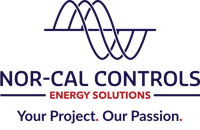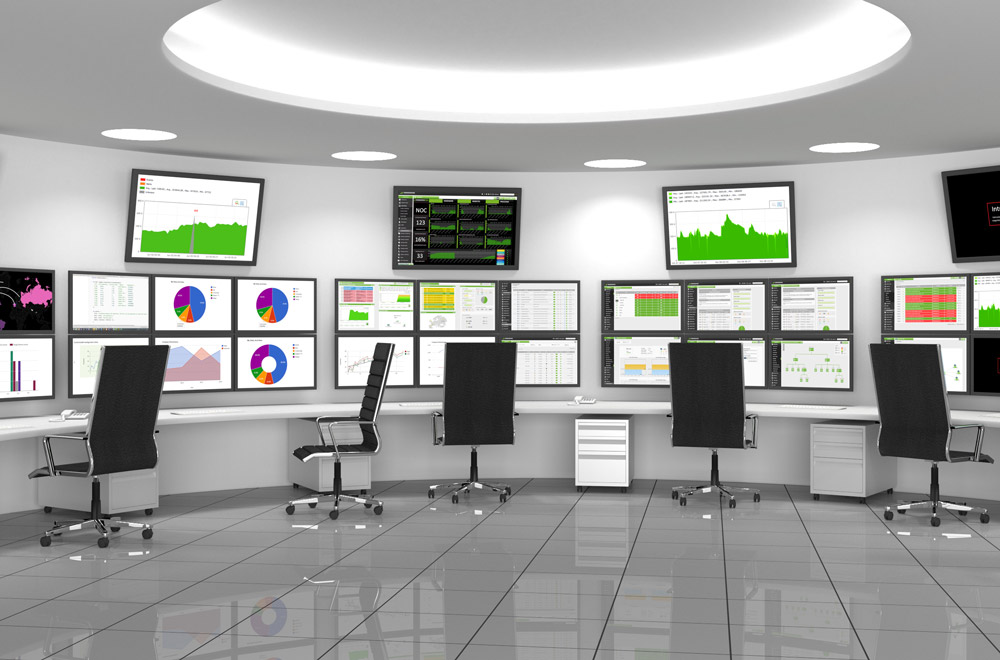Over the past several articles, we've covered the major components of Supervisory Control and Data Acquisition (SCADA) systems for solar PV sites. Now, let's discuss how solar plants operate and the part the SCADA system plays in those operations.
What are the typical responsibilities of a plant operator for a utility-scale solar facility?
The typical responsibilities of a plant operator for a solar facility are the same as they would be for a traditional power generator.
These responsibilities encompass:
- Maintaining all the site equipment and keeping it proper working order
- Troubleshooting equipment that is down, has an alarm, or has a diagnostic issue
What are some of the typical operational requirements for utility-scale solar facilities?
The specific operational requirements for a utility-scale solar plant depend on two documents: the Power Purchase Agreement (PPA) and Interconnect Agreement (IA). These two contracts determine how the plant will function, with requirements for output, power factor, voltage range, frequency, etc. These requirements differ from plant to plant.
Though the specifics may vary, there are two basic forms of support every power plant must provide:
- Reactive power, which helps to control the voltage at a set or given voltage range
- Power, measured in megawatts or kilowatts, which helps to overcome frequency lags, droops or over-frequency events
The purpose of any power plant—whether solar or traditional—is to maximize power output while supporting a stable, reliable grid. Optimally, a plant appears to the grid as a single, unified source of power. It needs to run at a frequency of 60 Hertz and at a constant voltage. A plant accomplishes this by regulating reactive and active power with a Power Plant Controller (PPC). You can read more about this process here.
Going over or under the specified voltage range or frequency has negative ramifications for the power grid and the plant itself. Imbalances and discrepancies directly affect the grid. On the plant side, there is a risk of low side equipment fault if the plant starts producing or absorbing excess reactive power while trying to control voltage.
Are control requirements typically owner, utility, or ISO driven? How are control requirements typically dispatched to the operator?
We briefly touched on two contracts that determine the control requirements for a solar plant: the IA and PPA. Let's take a closer look at those now.
- The basic IA is driven by either the utility or the Independent System Operator (ISO). The utility or ISO dictates the setpoints a plant must meet at the point of interconnect. This is all about grid reliability—the utility or ISO determines the setpoints that are reliable and what a plant must do to provide that reliability, in order to connect to their grid.
- The PPA is about selling energy. How will a plant get paid for the power that it produces? What are the production requirements?
The owner may also have requirements for how they want the plant to operate. These requirements would fall as a matrix hierarchy, or the matrix would fall below the utility and ISO requirements.
All of these different requirements are handled through the programming of the plant controls. At Nor-Cal, we review the IA and PPA for a plant. We talk with the owner about any specific control algorithms or control philosophies they want us to adhere to. We then program the plant to support everybody's needs.
For solar projects that include battery storage, how can batteries be utilized to support plant operation requirements? What are some of the differences in operating requirements for sites with storage resources versus PV-only?
We discussed earlier the importance of a stable grid and consistent power generation. The challenge is that solar PV plants can only produce during the daytime or during periods of radiance when there is sunshine. If there is a series of cloudy days, or if the plant goes offline, it can't produce to its maximum potential. Weather is, by nature, not always consistent.

Battery storage addresses that challenge. Batteries can supplement power production, and can also react to power or provide frequency response or drip control, if needed.
The operating requirements for sites with storage resources versus PV-only are the same. A plant will still produce and adhere to the IA and PPA, but there will be a reservoir or power that can be released if needed. There are, however, some special procedures that operators must adhere to when operating a plant with battery storage.
Inverters are self-contained and protected, but batteries are different. Imagine if you had a big building full of nothing but D-cell batteries that came out to be 50 megawatts of power! It is very important to control the temperature and charge state of the batteries. It doesn't take much to overstress the batteries by either discharging them too deeply or doing too frequent charge and recharge cycles that wear them out before their time is due. Battery systems require much more operator intervention and attention to keep them maintained, maintenanced and reliable.
What are some common technical issues that operators face when operating a solar facility? How often do alarms come in and how are they to be resolved?
The most common technical issues that operators encounter are communication losses. An operator may lose remote access to a facility, or to certain networked devices or equipment at a facility, such as an inverter, tracker or circuit. When that communication is lost, the operator is unable to find out what the plant or devices are doing, or to control them.
Sometimes, this involves a straightforward fix. For example, if an inverter gets faulted, a field tech can look at a little LED indicator on the front that tells them why it stopped working. The O&M contractor then gets called in to fix or replace the inverter.
The communication aspect is harder, because a solar PV plant can have a huge network that spans acres and acres—let's say over 19,000 acres for a 200 megawatt plant. That's a lot of ground to cover, literally and figuratively, when trying to pinpoint the source of a communication breakdown. You can learn more about how to troubleshoot this and other common technical issues in our SCADA Troubleshooting Basics guide.
SCADA system alarms notify operators of what's happening at the plant, including technical issues. For example, a SCADA system alarm called "Device Down" alerts the operator when a device stops communicating on the network, as just described. Alarms range from routine maintenance alerts all the way up to plant emergencies like equipment failure. You can read more about the different types of alarms and how they're communicated to plant operators here.
In situations where there are various simultaneous alarms occurring at a facility, how do operators prioritize which ones need immediate attention?
Proper alarm management, done during site integration, gives operators clear direction on which alarms to prioritize. This is done by assigning a priority/severity level to each alarm point in the system—each inverter, tracker, combiner box, transformer, MET station sensor, etc.
Alarms come in three priority or severity levels: High, Medium and Low. High priority alarms require emergency action, medium priority alarms require urgent attention but do not quite rise to the level of "emergency," and low priority alarms are informational or maintenance alarms.
Without proper alarm management, any event at a solar plant can trigger a flood of alarms, all set at the same priority level—typically the default, which is "high." At that point, the alarming doesn't mean anything because it isn't helpful. The operator won’t know which problem actually triggered the event, and which is the real "high priority" alarm to react to. All they know is that something happened, and they're going to have to spend a lot of time trying to figure out what.
The time and effort of alarm management, done ahead of time, is well worth it for the work it saves operators later on. At Nor-Cal, we work with customers during site integration to determine the priority/severity level they want assigned to each alarm point. We take into account recommendations and best practices from field and substation equipment manufacturers, as well as the ISA 18.2 alarm management standard. We then go in and assign the correct severity/priority to each alarm point in the system through the SCADA HMI software platform.
A robust alarm management scheme that meets best practices, standards and customer needs makes it far easier for operators to prioritize and resolve alarms.
What is the importance of an operator understanding the control logic narrative for the solar plant which they are operating?
The control narrative is a document provided by the SCADA subcontractor that communicates how the plant controls work. It plays a critical role in overall solar plant management.
Without an understanding of the process, plant operations is nothing more than a series of rote, unrelated tasks with no real meaning. For example, let's say that an operator is closing in capacitor banks. He knows he's supposed to do it, but he doesn't understand why. He doesn't understand the effect that the capacitor bank has on the system or the process. He doesn't understand the "big picture" of the plant and how it works. That's a problem.
When operators understand the control logic narrative and the process, they can make better decisions quickly. As an experienced operator once said: "It's better to control the process than have the process control you." If operators are always just reacting to alarms and events, they'll always be behind the curve. However, if they can recognize trends and are able to make operator decisions ahead of time, they'll be in control of the process. It's manageable and not merely reactive.
How can Asset Owners leverage SCADA system data to maximize the value of their operational assets?
SCADA system data can be utilized at two different levels: the site/operations level and the enterprise level.
At the day-to-day site/operations level, SCADA system data helps operators keep everything at the plant running as efficiently and profitably as possible. It helps prevent damage or premature degradation of the equipment by alerting operators of problems, maintenance needs and operational anomalies. The real-time data is right there at the operator's fingertips to see how the plant processes are running.
At the enterprise level, the data can help owners and board members make financial decisions based on production and profitability. Which sites should bid into the market? Which sites are most profitable and what can be done to increase profitability? There are now advanced solar performance analytics software solutions available, such as Power Factors Drive, which complement the SCADA to inform this enterprise-level decision making. Drive provides a layer of market, commercial, and operational contextual intelligence to the SCADA data.
How can Nor-Cal help?
Our business model—and our philosophy—is that we like to train and teach. We want to make sure that owners and operators are involved with their systems. Though we certainly do offer troubleshooting services for clients who need or prefer that, we never want clients to feel that they have to be dependent on us. We don't want them bound to a service-based model. We offer training so they have the opportunity to learn to do everything on their own.
Take a look at our Solar PV Operations Training page for course descriptions and upcoming dates. These two-day courses are system-agnostic, meaning they can be applied to any SCADA system platform. Private and site-specific training is also available. Contact us today.


